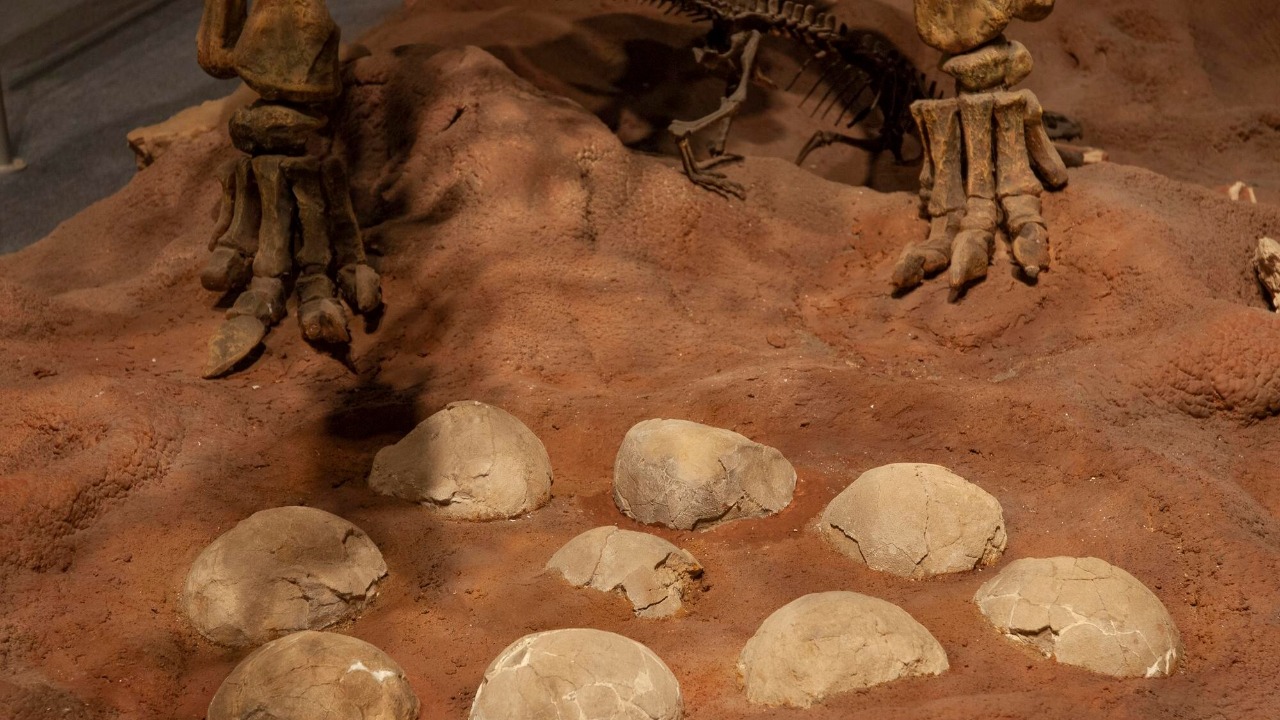
Scientists have made a remarkable breakthrough in the field of paleontology by developing a technique that uses uranium-infused dinosaur eggshells to accurately date ancient fossil sites. This innovative method, which leverages the natural absorption of uranium into the calcium carbonate structure of eggshells over time, offers a non-destructive alternative to traditional dating approaches. The technique has been applied to eggshells from various dinosaur nesting grounds across the globe, potentially revolutionizing our understanding of prehistoric life.
The Unique Composition of Dinosaur Eggshells
Dinosaur eggshells are primarily composed of calcium carbonate, a substance that naturally incorporates trace elements from surrounding sediments during the process of fossilization. One such element is uranium, which is absorbed into the eggshells post-deposition. The porous yet durable nature of these eggshells makes them an ideal geochemical trap for uranium. This has been observed in Late Cretaceous sites where the levels of uranium in eggshells correlate with known volcanic ash layers, providing a reliable calibration point.
Mechanisms of Uranium Incorporation
The process of uranium diffusion into eggshell lattices occurs through interaction with groundwater. This involves uranium-series isotopes such as U-234 and U-238. The chemical stability of uranium in carbonate minerals prevents it from leaching out, ensuring its long-term preservation in the fossil record. Lab analyses have shown that uranium concentrations increase predictably with burial depth and time, further supporting the reliability of this dating method.
Step-by-Step Uranium-Series Dating Process
The uranium-series dating process begins with the preparation of the eggshell samples. This involves cleaning the fragments to remove any contaminants while preserving the uranium signature. The decay ratios of the uranium isotopes are then measured using mass spectrometry techniques. These ratios are converted into absolute ages using established half-life constants. The accuracy of these ages is validated by calibrating them against independent dating methods such as argon-argon dating, making the technique applicable to eggshells aged between 10,000 and 100 million years.
Advantages for Dating Fossil Sites
Compared to radiocarbon dating methods, uranium-series dating of eggshells extends to timescales beyond 50,000 years, where carbon dating becomes ineffective. This method is also applicable to disturbed or contaminated sites, as eggshells provide in-situ records that are less affected by erosion. Furthermore, the cost-effectiveness and minimal sample requirements of this technique make it accessible for field expeditions in remote areas such as Patagonia or Mongolia.
Case Studies from Key Fossil Localities
One notable application of this technique is at the Hell Creek Formation in Montana. Here, uranium-dated eggshells have refined the timing of Tyrannosaurus rex nesting to 66 million years ago. In India’s Lameta Formation, the method has revealed hadrosaur eggshell ages of 67 million years, aligning with the period of Deccan Traps volcanism. The technique has also been successfully applied in Auca Mahuevo, Argentina, where it has dated titanosaur nests to the Maastrichtian stage.
Implications for Paleontological Research
The precision offered by this dating method enhances our understanding of dinosaur extinction timelines and migration patterns across continents. It also has broader impacts on correlating global fossil records, potentially resolving debates on avian dinosaur evolution. Ethical considerations are also addressed by this method, as it prioritizes non-destructive sampling to preserve museum specimens.
Challenges and Future Directions
Despite its advantages, the method does have limitations. For instance, the availability of uranium can vary in arid versus humid environments, necessitating site-specific modeling. Future advancements may include the development of portable spectrometry for real-time field dating of eggshells. There is also potential for extending this technique to other fossils, such as mammal teeth, to broaden its applications in paleoecology.
Overall, the development of uranium-series dating of dinosaur eggshells represents a significant leap forward in paleontological research. By providing a non-destructive and precise method for dating ancient fossil sites, it opens up new avenues for understanding the history of life on Earth. As this technique continues to be refined and applied, we can expect to gain even deeper insights into our planet’s prehistoric past.
More from MorningOverview